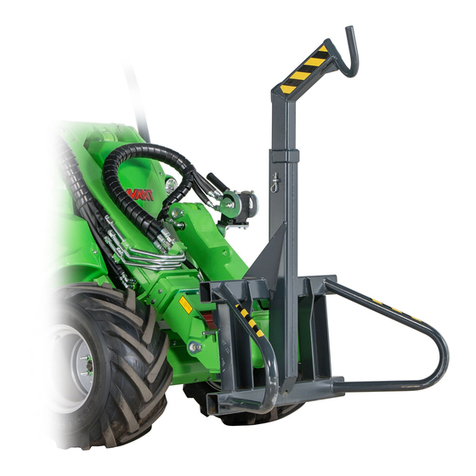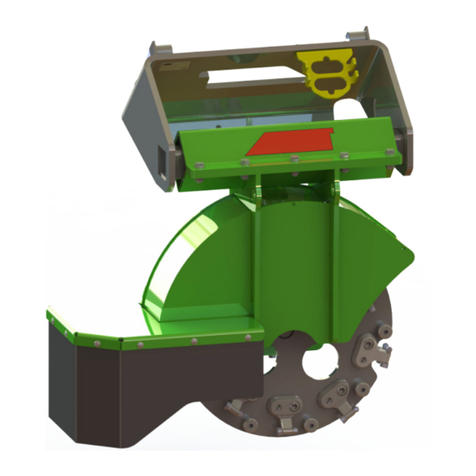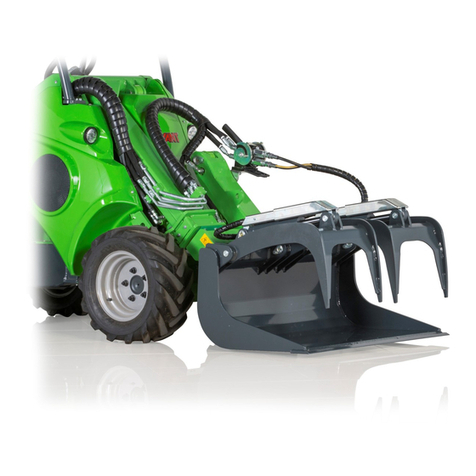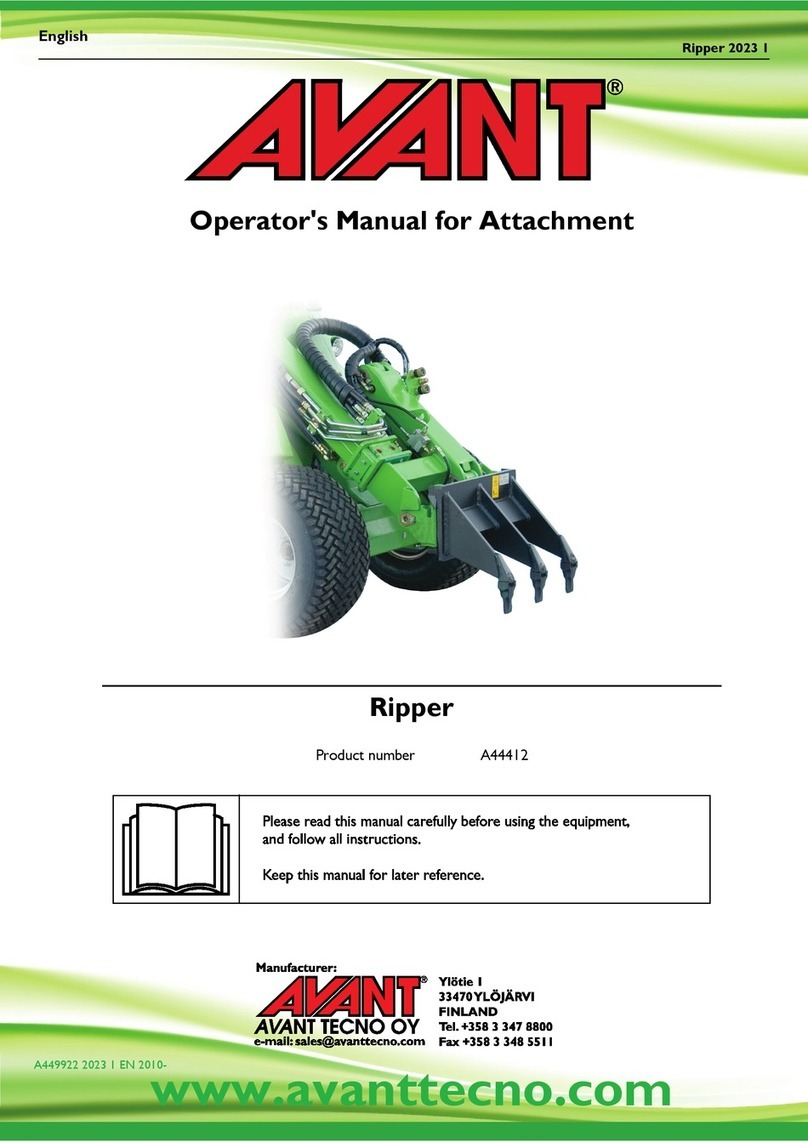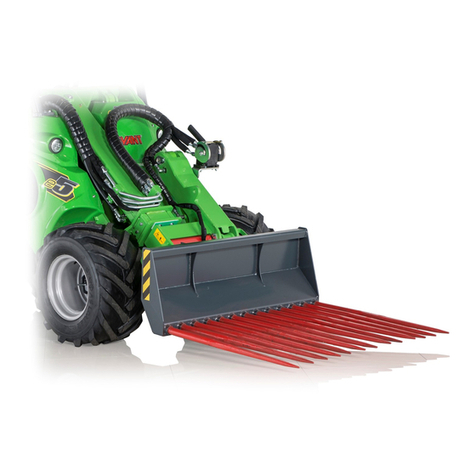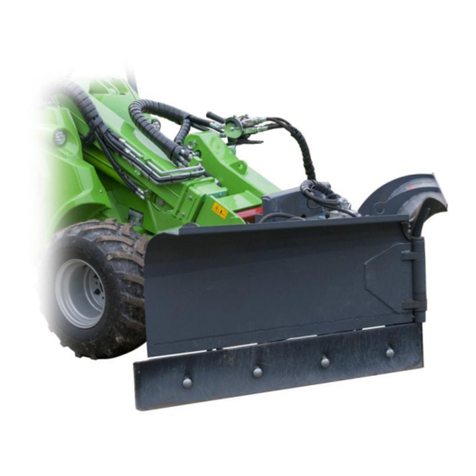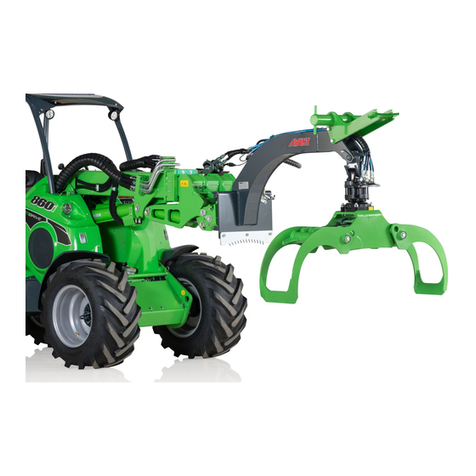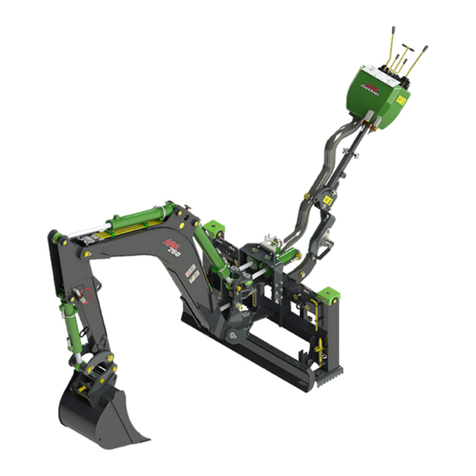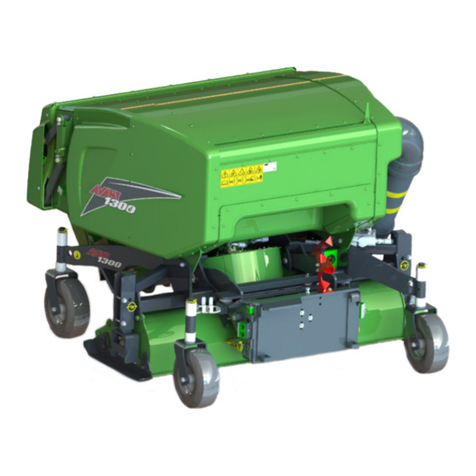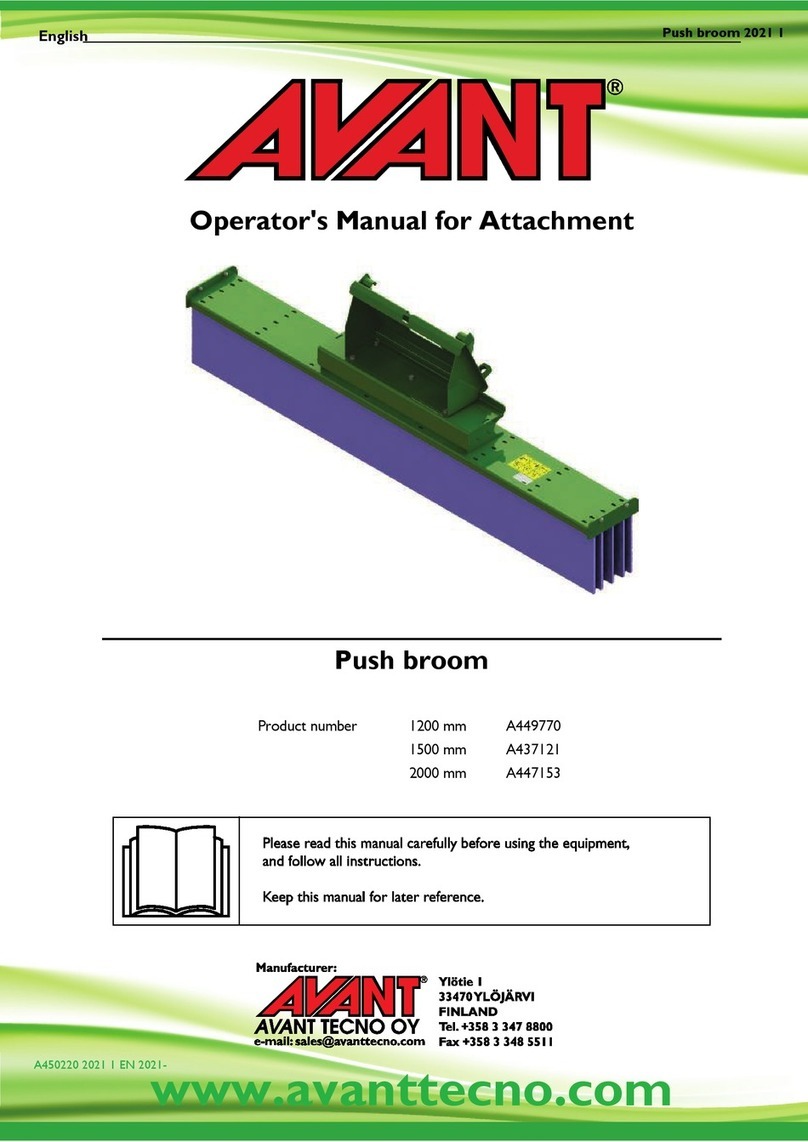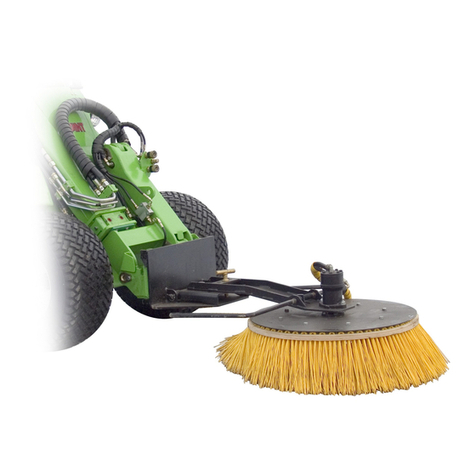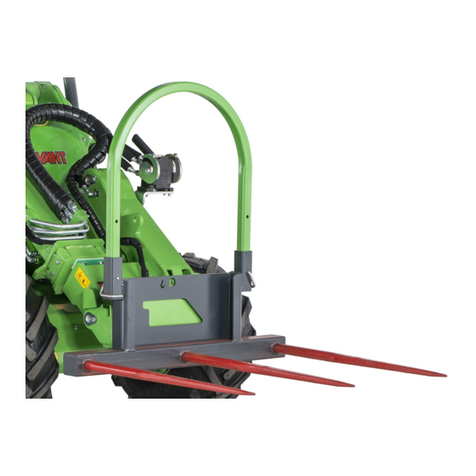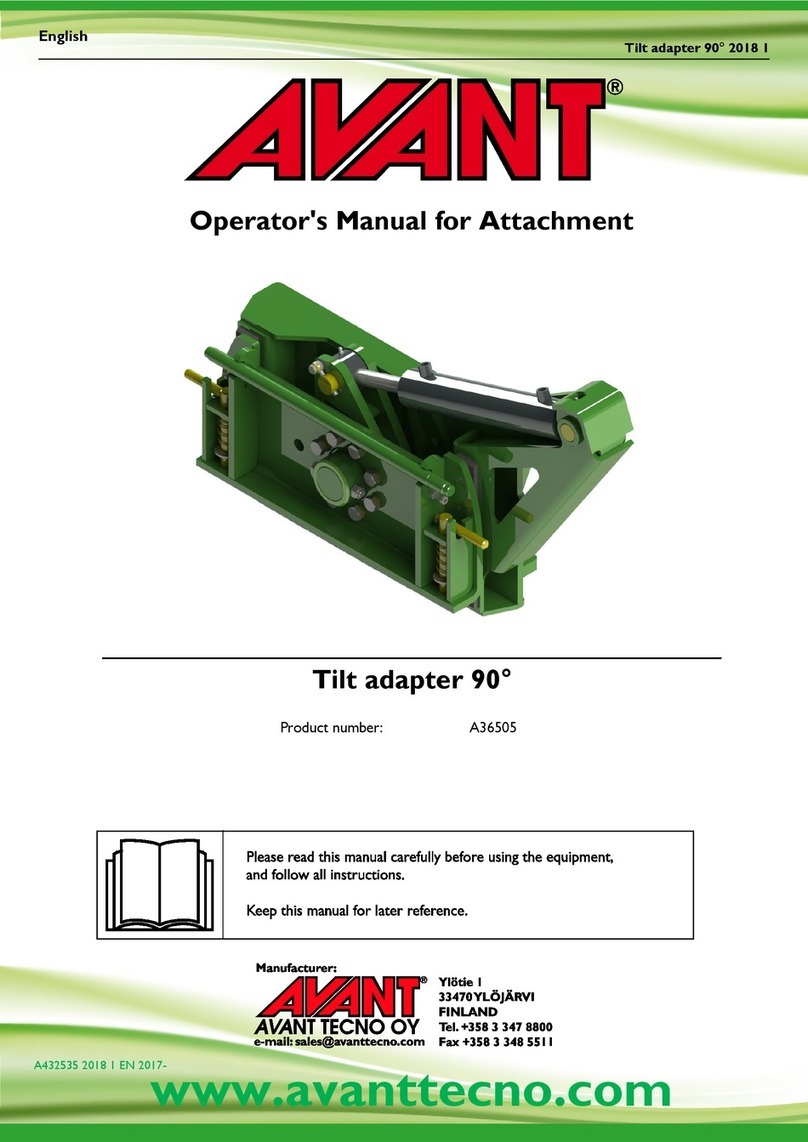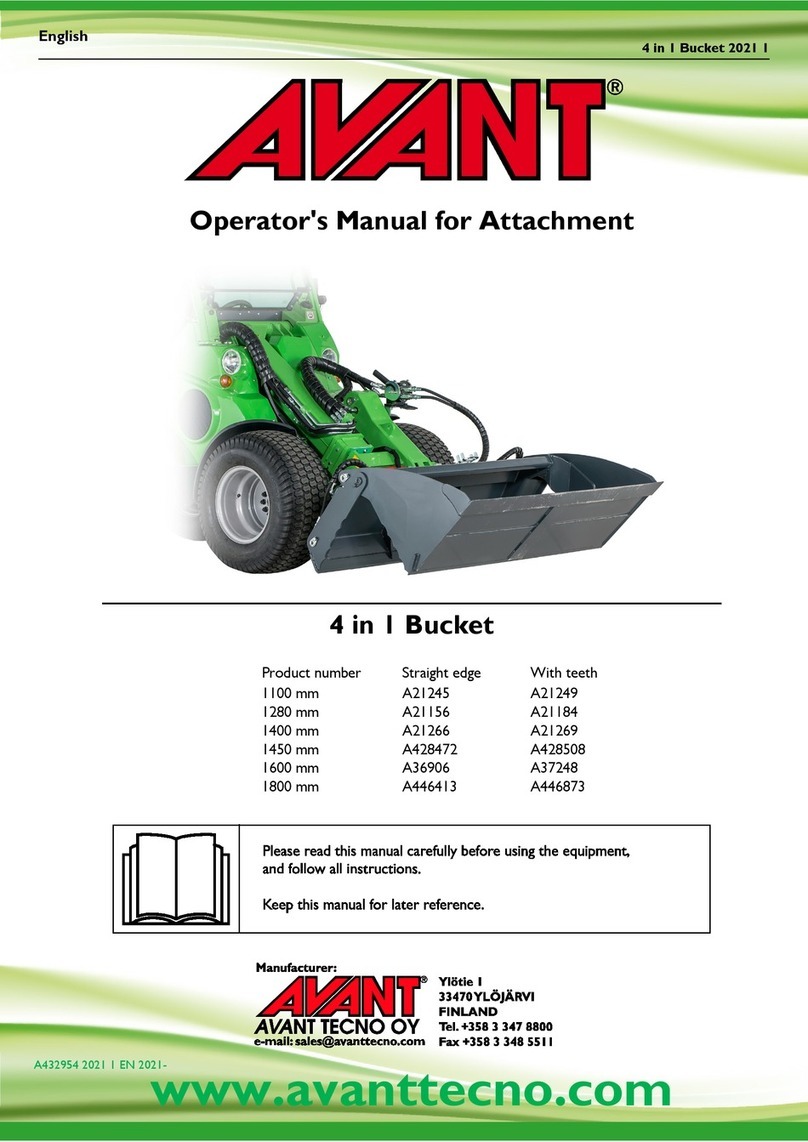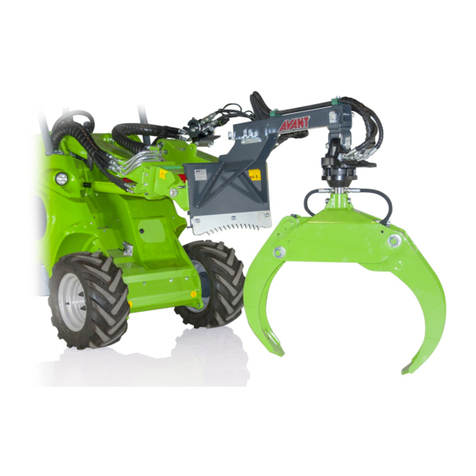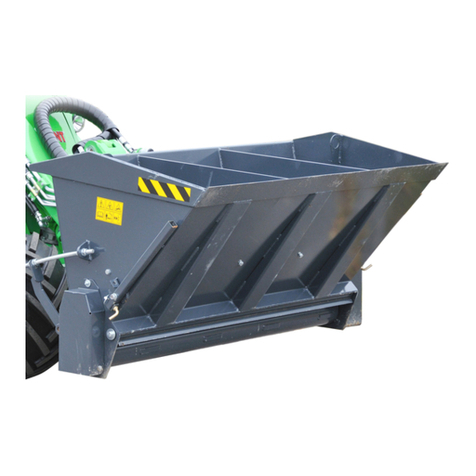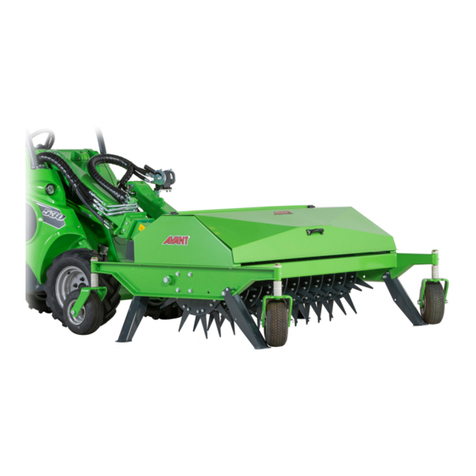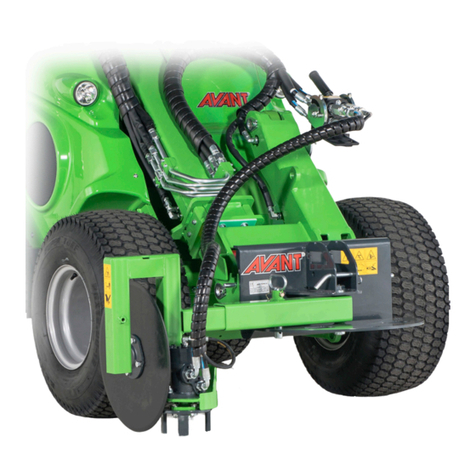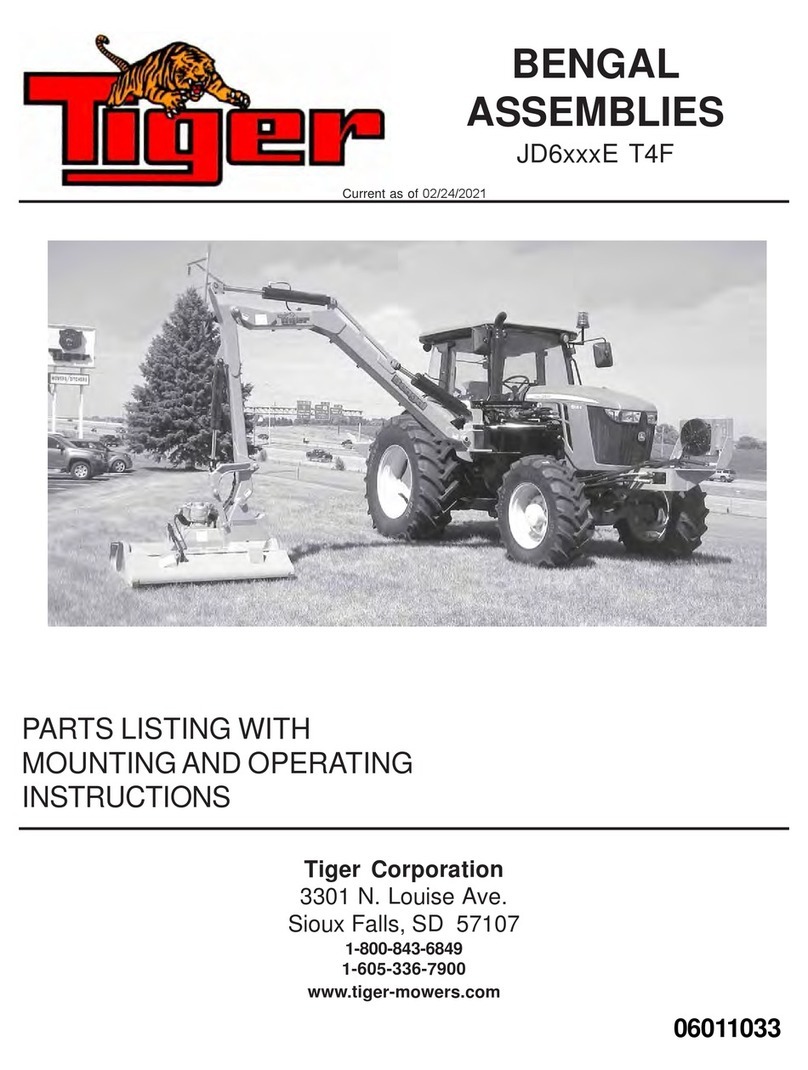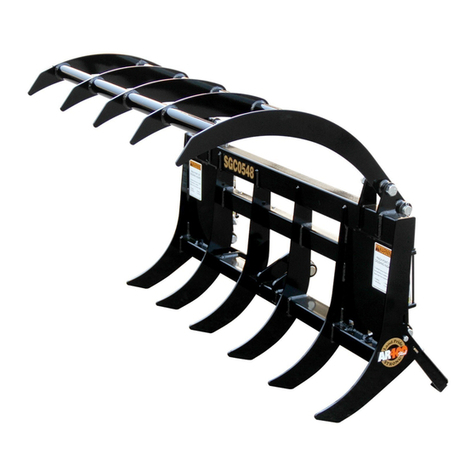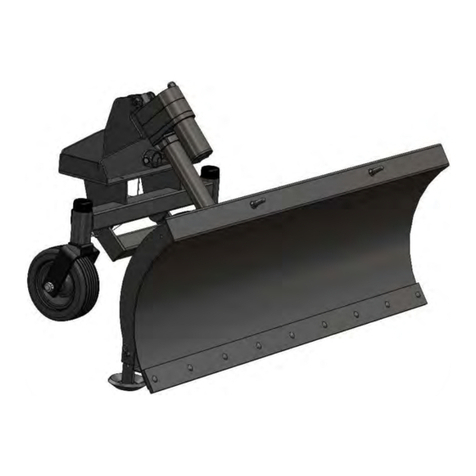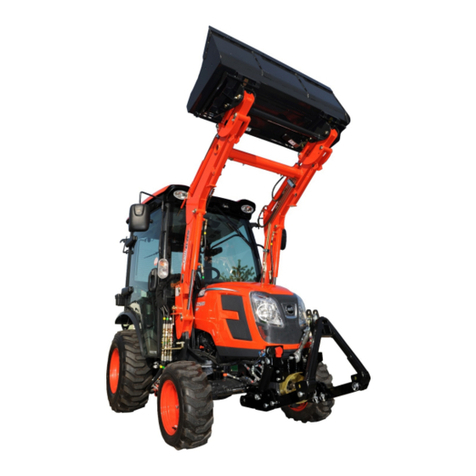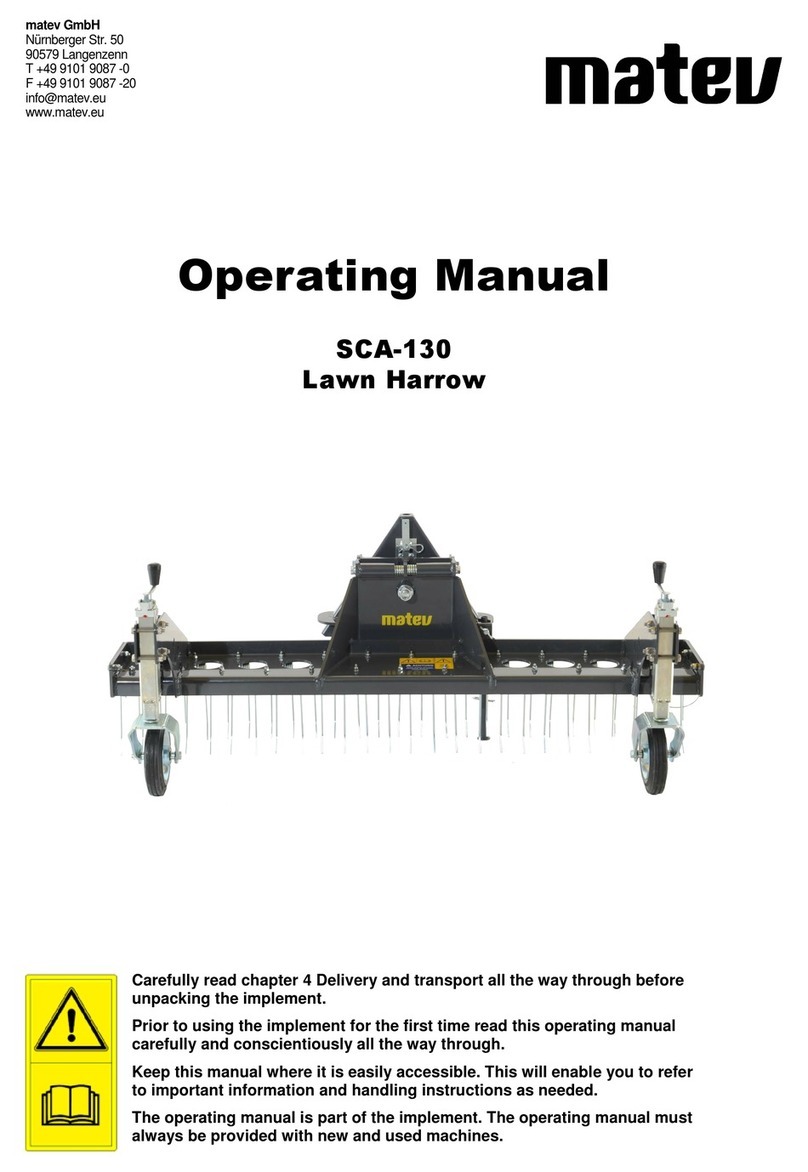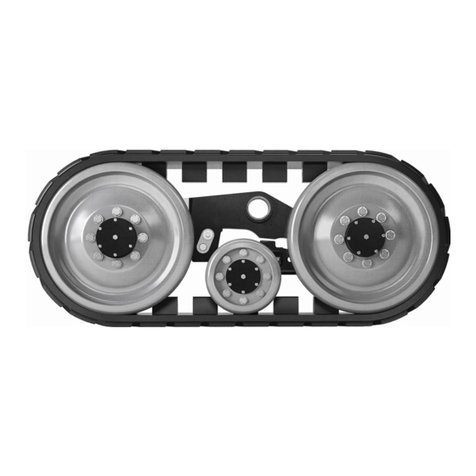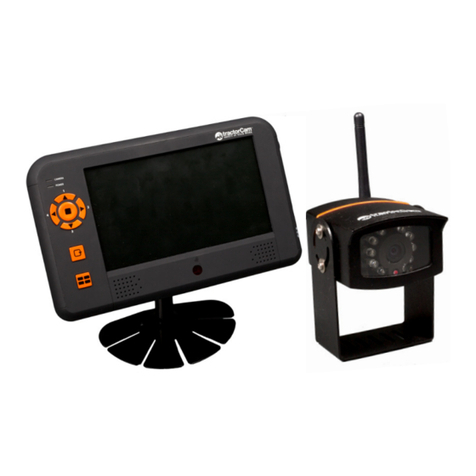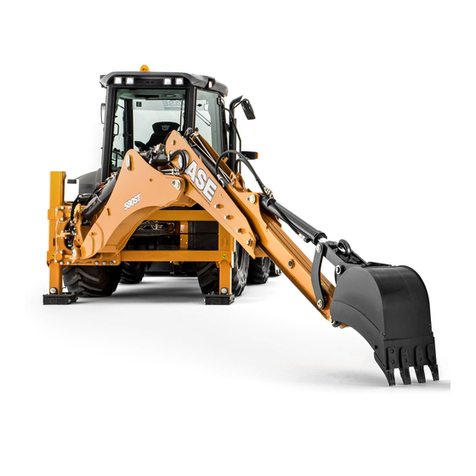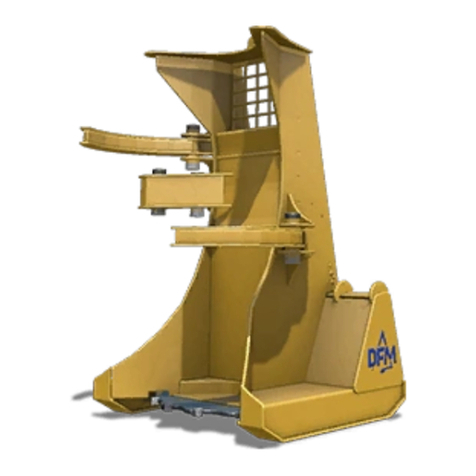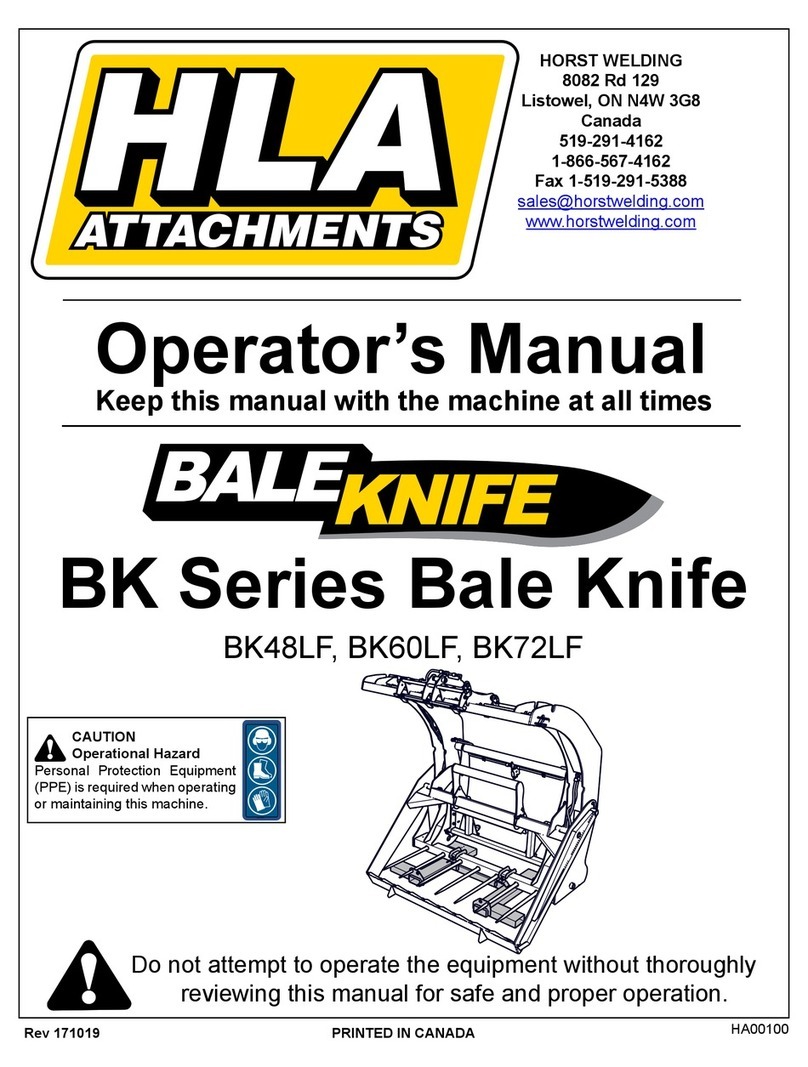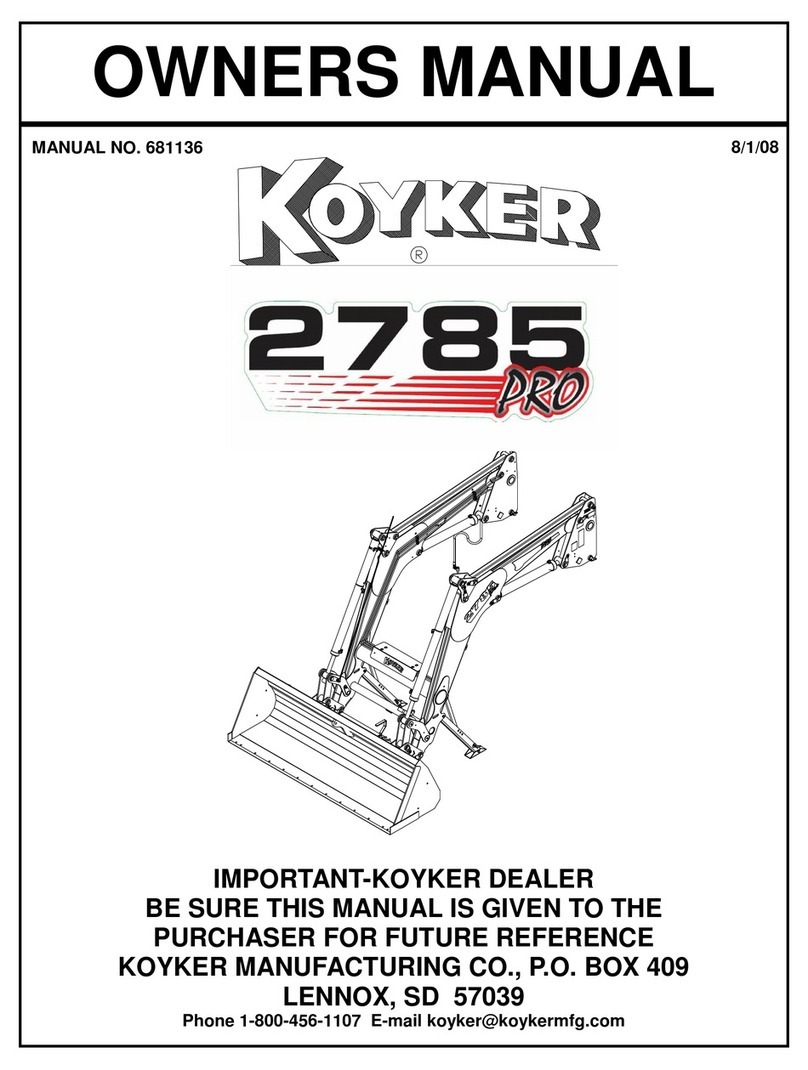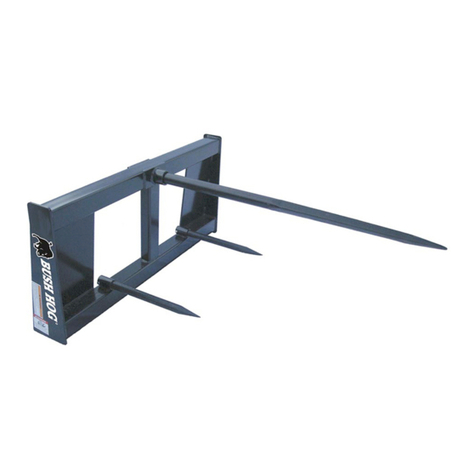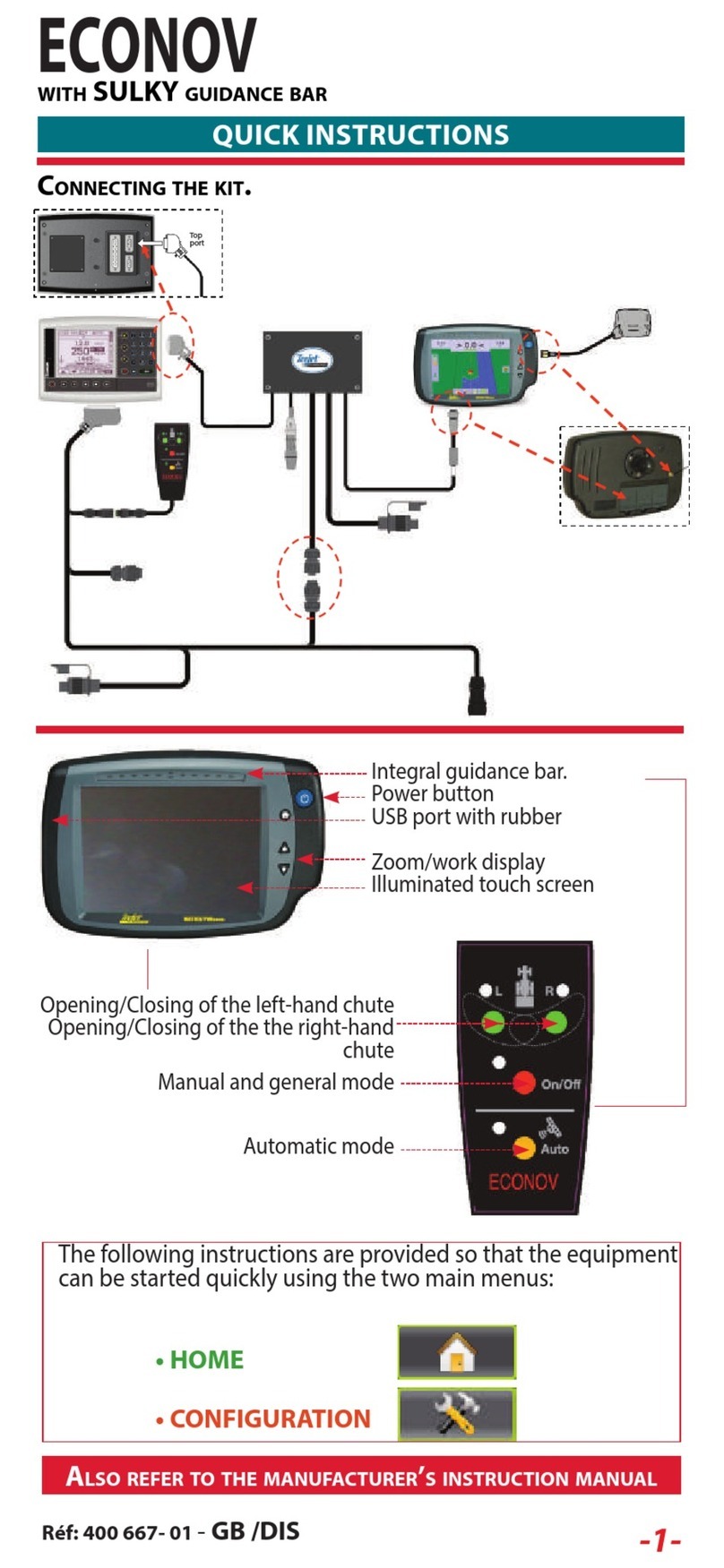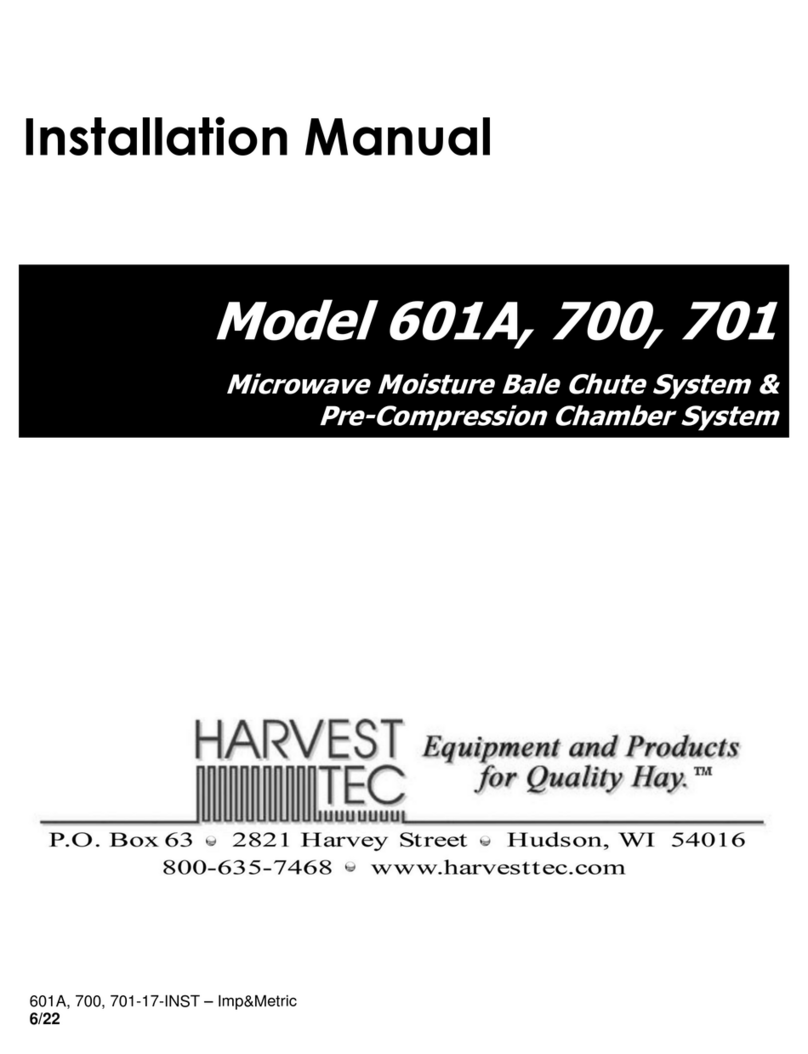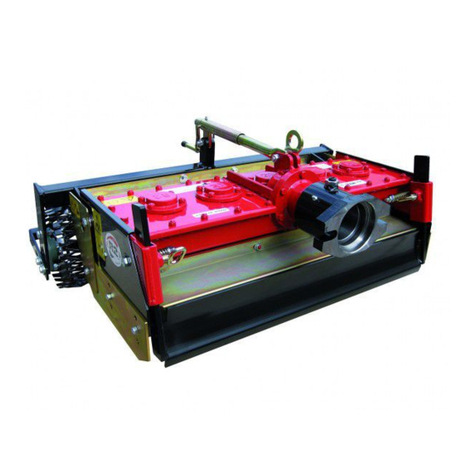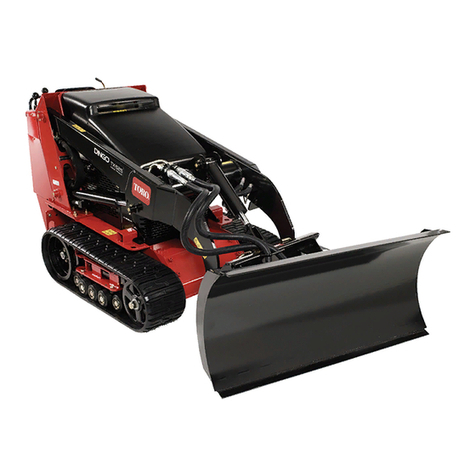
7 (24)
3. Safety instructions for using the attachment
Please bear in mind that safety is the result of several factors. The loader-attachment combination is highly
powerful and improper or careless use or maintenance may cause serious personal injury or property
damage. Due to this, all operators must carefully familiarise themselves about correct use and the operator's
manuals of both the loader and the attachment before starting operation. Do not use the attachment if you
have not completely familiarised yourself with its operation and the related hazards.
DANGER
Misuse, careless use, or using an attachment that is in poor condition may
cause risk of serious injuries. Familiarise yourself with the
controls of the loader,
correct coupling procedure, and the correct way to operate the attachment at a safe
area. Study especially how to stop the equipment in a safe manner. Read all safety
precautions carefully.
Read all safety instructions carefully before handling the attachment
WARNING
When attaching an attachment to the loader, ensure that the locking pins of the
loader's quick attach plate are in the lower position and that they have locked
the attachment to the loader. Never lift or move an unlocked attachment.
This attachment is designed to be used by one operator at a time. Do not let others
near the danger area of the equipment when it is in use.
Always transport the attachment as low as possible to keep the centre of gravity low,
and keep the telescopic boom retracted during driving.
Risk of crushing under the attachment or the loader boom - Lower the
attachment firmly on the ground before leaving the driver’s seat.
the attachment is properly supported during any maintenan
ce or inspections. Do not
leave the driver’s seat when the loader boom is lifted. Going under a raised
attachment or loader boom is dangerous, as the boom may lower due to loss of
stability, mechanical fault, or if another person operates the controls of the loader.
Risk of thrown objects - Keep a safety distance of at least 2 metres between a
pressure washer and any person in vicinity.
Keep in mind that the pressure
washer will throw water and other objects at high speed.
Stop the pressure washer if
the
re are persons or fragile objects in the direction of water throwing. Never aim high
pressure water at a person.
Pay attention to the surroundings and any other persons and machines moving in the
vicinity. Pay attention to the contours of the terrain an
d other hazards, such as
branches and trees that can reach to the driver's area, loose rocks, and slippery
surfaces.
Ensure that ventilation is sufficient when operating indoors. Do not operate the loader
in closed spaces regardless of the engine or fue
l type. Exhaust gases may
concentrate to hazardous levels.
Never use the attachment to lift or to transport persons or as any kind of work
platform even temporarily.
Make sure to use only an attachment that is in good condition. Check the attachment
thoroughly in regular intervals. Do not modify the attachment in a manner that would
affect its safety. It is prohibited to drill holes on the attachment, and welding or other
means of fixing hooks or other objects on the attachment is strictly prohibited.
Shut down the loader and place the attachment to a safe position as shown in Safe
stopping procedure before any cleaning, maintenance, or adjustments.
